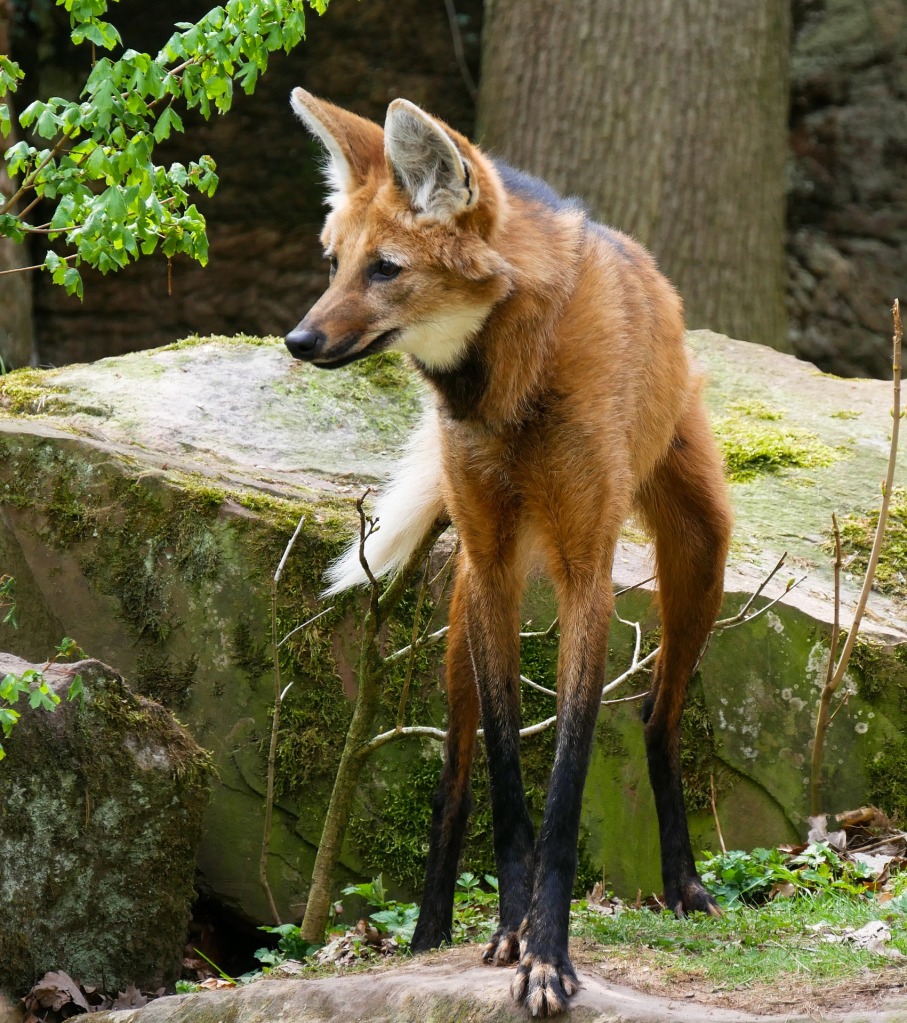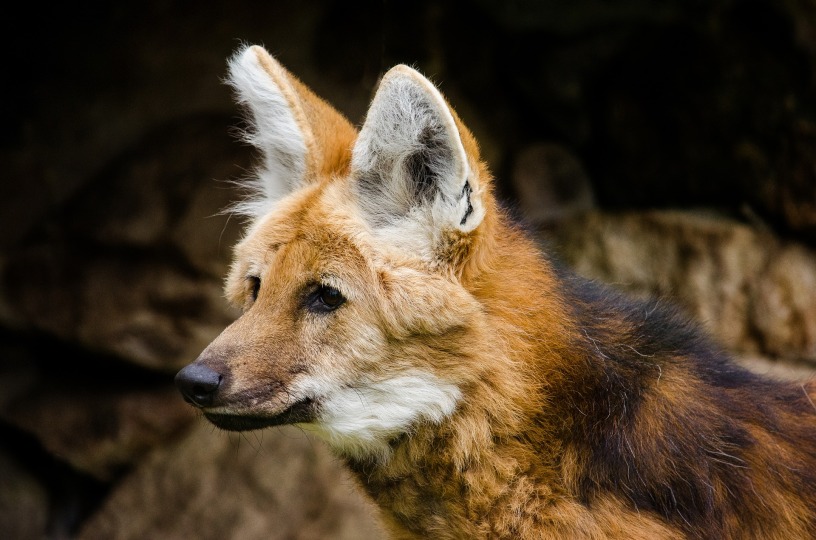The maned wolf is to me one of the most beautiful members of the dog family. I think it’s because they have such long, graceful legs, which is the same reason I like greyhounds and salukis (even though I own two quite stout dogs that look nothing like those lovely breeds). Maned wolves have interested me since I heard of them, but I never really looked them up or learned about them, so I figured I should and should then write about it.
As you can probably guess from their name, maned wolves are canines, so they are related to dogs, foxes and wolves. They are different enough, however, from these canines to be placed in their own genus, Chrysocyon. Maned wolves can be found in South America, in Brazil and Peru (though its former range was much larger than this). They live mainly in grassland areas, where their long legs help them see over the high plant life.

Image by Gerhard G. from Pixabay
Another feature of maned wolves that makes them very beautiful is their bright red coat. In fact, maned wolves kind of look like red foxes, only taller and more slender. They are the largest South American canine, standing up to a metre at the shoulder. As its name suggests, the maned wolf has a mane that it uses to defend itself when threatened.
Little is known about maned wolf reproduction, and what is known has mostly been learned from captive wolves. Maned wolves do not form packs like many other canines, instead spending most of their time alone. They form monogamous pairs, and each pair shares a territory, though the pairs avoid each other except during the breeding season. It seems like a strange way to live, but at least maned wolves don’t have to waste time looking for mates. The pair mark their territory with urine and faeces, which apparently smells like cannabis. Who knew?
Despite their size, maned wolves do not take large prey, mostly eating rabbits, rodents and birds. Surprisingly, a large portion of the maned wolf’s diet (sometimes over 50%) consists of plant matter, especially the wolf apple, a fruit that may help kill giant kidney worms, parasites that infect maned wolves. When maned wolves were first kept in captivity, no one knew they liked fruit, so they were fed a heavy meat diet, and soon developed health problems, such as bladder stones. I feel like if you plan on keeping an animal in captivity, you should at least make an effort to find out what it eats.

Image By Ltshears – Trisha M Shears – Own work, Public Domain
Maned wolves are currently ranked as near threatened by the IUCN, but are a protected species in Brazil. Because of their unique position in the canine evolutionary tree, the maned wolf is a very important species, so good on Brazil for protecting them before it’s too late. Also good luck to Brazil in the World Cup, even though I’m not rooting for them it’d be nice for the home team to win!
Cover Image by Andrea Bohl from Pixabay

I’m guessing they don’t hunt large prey because they don’t hunt in packs. So it’s just one wolf against the prey. A large enough pack of wolves can apparently hunt and kill even a blue whale, if they can find one.
I have a feeling we will be seeing a blog on giant kidney worms soon…